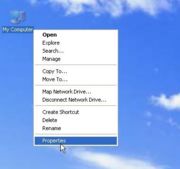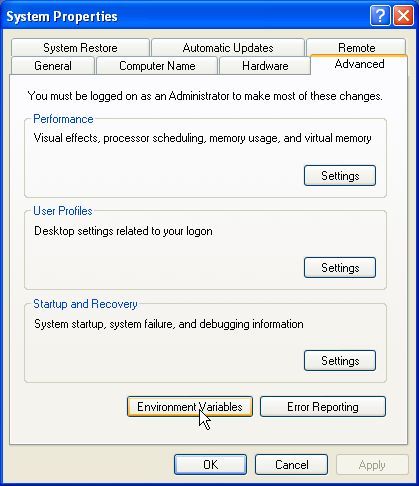ADS
From CVL Wiki
m (Jun 2011 - Added info for ADS 2011) |
|||
| Line 27: | Line 27: | ||
<br>For a visual representation of the steps just covered please [http://computing.ece.vt.edu/wiki/ADS_Windows_Installation_Pictures click here]. | <br>For a visual representation of the steps just covered please [http://computing.ece.vt.edu/wiki/ADS_Windows_Installation_Pictures click here]. | ||
| + | ===Install Alternative (ADS 2011)=== | ||
| + | |||
| + | Download the installation package from the CVL site or from [http://edocs.soco.agilent.com/display/downloads/Advanced+Design+System]. | ||
| + | <br>Run the installation package for ADS and select the use floating license when requested. | ||
| + | <br>When asked, enter the following URL for the license server: 27003@license.ece.vt.edu | ||
| + | <br>Reboot and you should be ready to go. | ||
| + | <br>NOTE: In ADS 2011 you have to unpack the vendor libraries you wish to use from the folder "Agilent/ADS2011_05/oalibs/componentLib" and then associate them with your wordspace as you create it (ADS 2011 uses workspaces rather than projects, but can import projects). | ||
| + | |||
| + | ===Vendor Library Summary=== | ||
| + | ADS Libraries | ||
| + | #Analog/RF: This is the basic ADS library of lumped components, TLs, sources, and simulation controllers. You don’t need to do anything here. This library is added automatically to all schematics. | ||
| + | #DSP: This is the basic Ptolemy library. This library is added automatically to all schematics. Normally uncheck this library unless using the Ptolemy (DSP) simulator. | ||
| + | Vendor Libraries | ||
| + | #Analog Parts Library: This contains low frequency models of BJTs, diodes, and FETs. For example, the 2n2222 is a typical device. | ||
| + | #HF Diode Library: This contains many high frequency models of mixer, varactor, and PIN diodes | ||
| + | #Measurement Based SMT Passive Library: This is a library that contains (for some reason) only some MuRata (SMT=Surface Mount) capacitors. | ||
| + | #Microwave Transistor Library: This contains high frequency models of transistor dies | ||
| + | #RF Passive SMT library: This contains high frequency models of surface mount (SMT) capacitors, inductors and resistors. Models include parasitics. | ||
| + | #RF Transistor Library: This contains high frequency models of transistor dies + package parasitics | ||
| + | #S-Parameter Library: This contains S-parameters of RF transistors and some MMIC amplifiers | ||
| + | #System Library: This contains S-parameters of amplifiers, filters, and other RF modules | ||
==Additional Links== | ==Additional Links== | ||
Revision as of 12:35, 23 June 2011
Contents |
Getting Started
Before installing ADS you need to do this important step in order for the program to work. On the desktop right click on my computer and select the properties option from that menu (fg.1). A window called System Properties should pop up. From here select the Advanced Tab (fg.2). Under the Advanced tab click on the button called Environmental Variables. Select New for the options for User variables (fg.3). Enter for Variable name AGILEESOFD_LICENSE_FILE and for Variable value 27003@license.ece.vt.edu (fg.4).
Once the new environment variable has been entered you can proceed with the installation of ADS below.
Installing ADS on Windows (2000/XP/Vista)
Disclaimer: ADS is to only be installed on a University Owned Computer.
Install
Step 1 Double click on My Computer and in the address space type \\filebox.ece.vt.edu\ADS. Note that the slashes are back slashes, "\", not "/". If this does not work, try \\128.173.88.43\ADS. To gain access to the folder you must type in your ECE Username and password.
Step 2 Once in the ADS folder find the file called setup.exe and double click to start the installation.
Step 3 Click next on the first window that welcomes you to the installation. The Next page is the license agreement (please familiarize yourself with the license) which you accept by clicking the yes tab.
Step 4 Enter your desired user name and Virginia Tech ECE as the Company Name. The next window you will define where ADS will be installed (C:\ADS2006A\ is the default). After defining the install folder you will specify your home directory where all your projects will be saved to. (default is C:\users\default)
Step 5 In the next window click complete install. After you have done this the program will confirm the options you have chosen. Review these and continue. The program will install itself now.
Step 6 After the install completes a window will pop up telling you that you need a license to run the program. Just click OK. Another window will pop up asking if you will be using a FLEXid Dongle, click no.
Step 7 ADS will ask you to restart your computer in order to complete installation.
For a visual representation of the steps just covered please click here.
Install Alternative (ADS 2011)
Download the installation package from the CVL site or from [1].
Run the installation package for ADS and select the use floating license when requested.
When asked, enter the following URL for the license server: 27003@license.ece.vt.edu
Reboot and you should be ready to go.
NOTE: In ADS 2011 you have to unpack the vendor libraries you wish to use from the folder "Agilent/ADS2011_05/oalibs/componentLib" and then associate them with your wordspace as you create it (ADS 2011 uses workspaces rather than projects, but can import projects).
Vendor Library Summary
ADS Libraries
- Analog/RF: This is the basic ADS library of lumped components, TLs, sources, and simulation controllers. You don’t need to do anything here. This library is added automatically to all schematics.
- DSP: This is the basic Ptolemy library. This library is added automatically to all schematics. Normally uncheck this library unless using the Ptolemy (DSP) simulator.
Vendor Libraries
- Analog Parts Library: This contains low frequency models of BJTs, diodes, and FETs. For example, the 2n2222 is a typical device.
- HF Diode Library: This contains many high frequency models of mixer, varactor, and PIN diodes
- Measurement Based SMT Passive Library: This is a library that contains (for some reason) only some MuRata (SMT=Surface Mount) capacitors.
- Microwave Transistor Library: This contains high frequency models of transistor dies
- RF Passive SMT library: This contains high frequency models of surface mount (SMT) capacitors, inductors and resistors. Models include parasitics.
- RF Transistor Library: This contains high frequency models of transistor dies + package parasitics
- S-Parameter Library: This contains S-parameters of RF transistors and some MMIC amplifiers
- System Library: This contains S-parameters of amplifiers, filters, and other RF modules
Additional Links
Momentum Tutorial
Agilent Home Page
Agilent history
ADS Tutorial
Return to Main Page
Return to Software Packages and Programs




